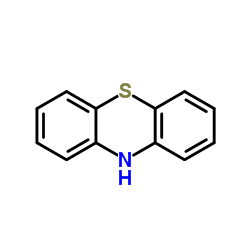| Description |
PPA-904 is a specific phenothiazine photosensitizer used in photodynamic therapy.
|
| Related Catalog |
|
| Target |
Parasite[1]
|
| In Vivo |
Topical PPA904 photodynamic therapy is a promising treatment for cutaneous leishmaniasis. The best curative PPA904-photodynamic therapy regimen is achieved under the conditions of a longer duration of topical application time (90 minutes) and several (three) consecutive treatments with 4-day intervals between treatments[1]. PPA904-PDT can provide an immunomodulating, dose-dependent efflux on IL-12p70 production. This mechanism could be responsible for promoting a more rapid healing in PPA904-PDT treated mice[2]. Treatment of PPA904 is well tolerated with no reports of pain or other safety issues. PPA904 treated subjects show a reduction in bacterial load immediately post-treatment. After 3 months, 50% (four of eight) of subjects with actively treated chronic leg ulcer show complete healing, compared with 12% (one of eight) of subjects on placebo[3].
|
| Animal Admin |
Mice: 106 metacyclic parasites in 20 mL of PBS are inoculated intradermally into the ears of 6- to 8-week-old BALB/c female mice. A PPA904 cream is applied topically onto the lesion under dark conditions. The areas in the right ear are then irradiated with LC-122A, non-coherent light source equipped with a broadband optical filter, which is inserted into the light delivery system. The filter peaks at 665 nm and has a half-band width of 30 nm. A fluence of 50 J/cm2 (50 mW/cm2) is delivered to the lesion on the right ear, while the left ear (and left ears of the other mice in this group) serves as the drug only group. The ears from mice with no procedure serve as the infected nontreated group. Mice are sacrificed 5 days after photodynamic therapy. Parasite loads in the ears are determined[1].
|
| References |
[1]. Akilov OE,et al. Optimization of topical photodynamic therapy with 3,7-bis(di-n-butylamino)phenothiazin-5-ium bromide for cutaneous leishmaniasis. Lasers Surg Med. 2009 Jul;41(5):358-65. [2]. Akilov OE, et al. Photodynamic therapy for cutaneous leishmaniasis: the effectiveness of topical phenothiaziniums in parasite eradication and Th1 immune response stimulation. Photochem Photobiol Sci. 2007 Oct;6(10):1067-75. [3]. Morley S, et al. Phase IIa randomized, placebo-controlled study of antimicrobial photodynamic therapy in bacterially colonized, chronic leg ulcers and diabetic foot ulcers: a new approach to antimicrobial therapy. Br J Dermatol. 2013 Mar;168(3):617-24.
|

